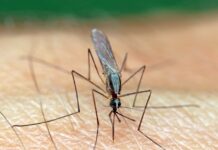By Kay Leaman, Health Architect, HealthyDay HealthyLife
Intermittent: Coming and going at intervals, not continuous; occasional, limiting food consumption to certain hours each day.
Intermittent fasting (I.F.) is currently one of the world’s most popular health and fitness trends. Reasons behind this trend is weight loss, improved health, simplified lifestyle and positive effects on the body and brain.
I.F. focuses on when you eat vs. what you eat. That being said, eating high-calorie junk food, super-sized meals or desserts/treats during eating hours will not produce the benefits most are looking for. Following a Mediterranean diet is recommended for best results. If you would like a Mediterranean diet foods list you can email succeed.hdhl@gmail.com with MEDITERRANEAN DIET in the subject line.
There are several types of I.F.:
• Sixteen hours fasting/eight hours eating (You can also choose 14/10 or 12/12). If starting with 16/8 is too difficult you can choose the lighter one and work up to the max.
• Fast for two consecutive days each week.
• Limit food intake to 500-600 calories on two non-consecutive days each week.
• Eating one meal per day for two days each week (consecutive or nonconsecutive)
The most popular type of I.F. is the 16/8 (I am currently on a 12/12 schedule with my target being 14/10. We eat dinner no later than 6:30 pm (when life runs as planned) and breakfast just after 7 a.m.). It normally takes two to four weeks for the body to become accustomed to the new routine. Those who make it through the transition period tend to stick with it mostly because they notice they feel better.
During the fasting period limit your liquids to water and caffeine-free herbal teas. If you’re just starting out and struggling, chicken, beef or bone broth can be consumed. Things to consider are staying hydrated, avoiding thinking about food (remember, digestion begins in the brain followed by saliva secretion) and rest and relaxation.
One recommendation I found was to eat high-volume, low-calorie foods, which can include popcorn (plain or added spices), raw veggies and fruits with high water content such as grapes and melons. You can also improve taste without the added calories using garlic, herbs, spices or vinegar. Flavor can also reduce the feeling of hunger. Focus on nutrient-dense foods after fasting that are high in fiber and nutrients.
Studies have shown the main benefits include weight loss, a reduction in insulin resistance and inflammation, heart health, brain health and anti-aging. In-depth studies are in their early stages. Many were short-term, small or conducted on animals. Even though higher quality human studies are still needed, Mark M., who has studied I.F. for 25 years, said that when the body goes without food, it exhausts the body’s sugar stores and starts burning fat (referred to as metabolic switching). One research study that was not designed to look specifically at I.F. found that limiting the daily window of eating does not prevent weight gain over time or yield significant weight loss. Reducing the number of large meals or eating smaller meals may be associated with minimizing weight gain and maintaining weight. What I didn’t find in my research were any negative effects of fasting, unless of course it’s abused.
It is recommended for people under 18 years of age, women who are pregnant or breastfeeding, Type 1 diabetics or those with a history of eating disorders do not fast. You should check with your primary care physician if you need clarification in regards to your current health status.
Fasting has been a part of life for thousands of years for various cultures. It offers the body time to rest and repair and aids in cellular elimination of waste products. A healthy lifestyle is about balance. It’s about the choices we make and being honest with ourselves.
Here’s to health!
















































